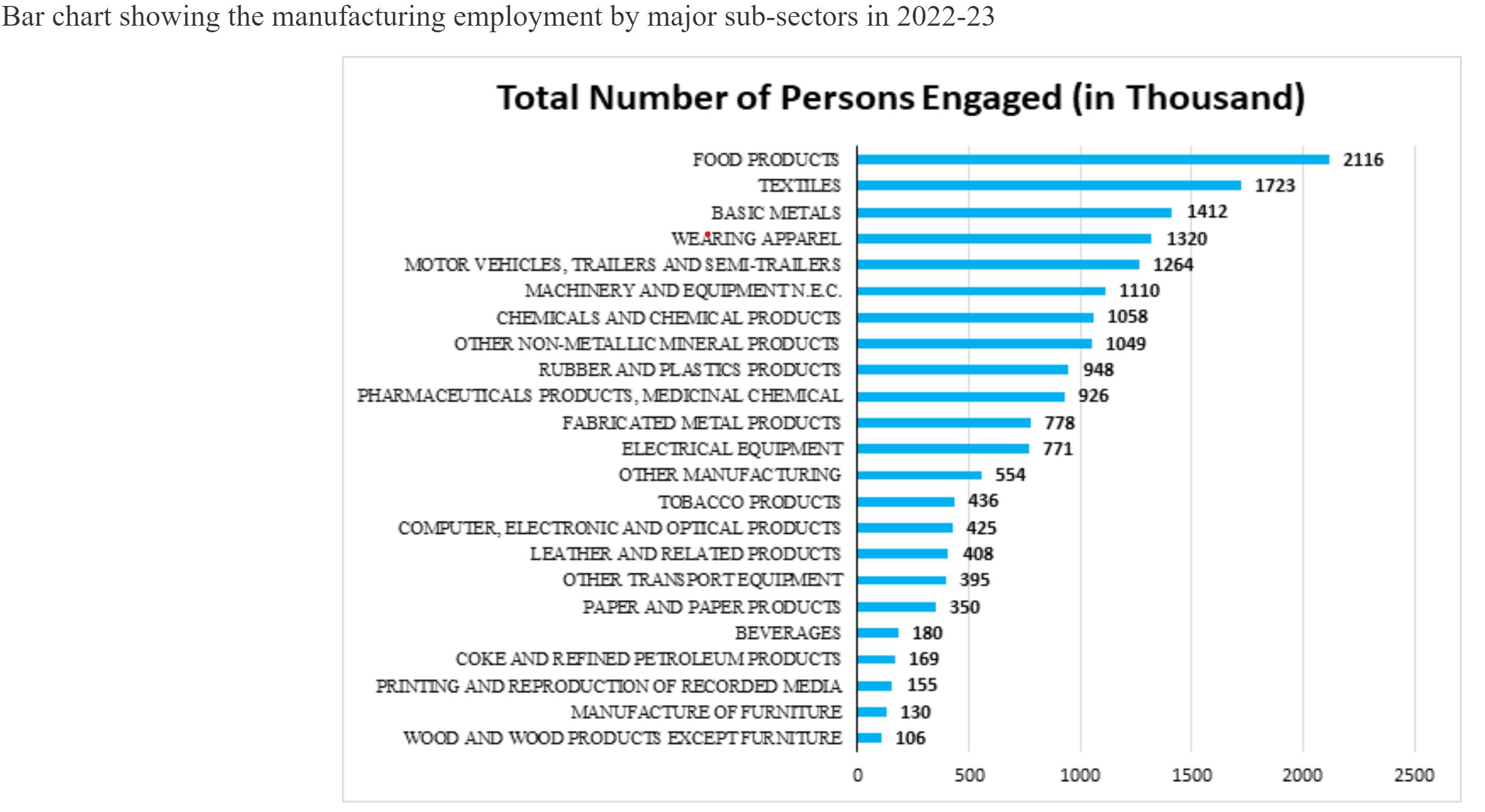Annual Survey of Industries (ASI) Results for 2022-23

- 03 Oct 2024
In News:
- The Ministry of Statistics and Programme Implementation (MoSPI) has released the results of the Annual Survey of Industries (ASI) for the financial year 2022-23 (April 2022 to March 2023).
- The fieldwork for this survey was conducted from November 2023 to June 2024.
- The ASI provides critical insights into the dynamics of the manufacturing sector, covering aspects such as output, value added, employment, and capital formation.
Key Highlights
- Gross Value Added (GVA): Increased by 7.3% in current prices for 2022-23 compared to the previous year.
- Industrial Output: Grew by over 21% in 2022-23 compared to 2021-22.
- Employment: Estimated employment in the sector rose by 7.4% over the previous year, surpassing pre-pandemic levels.
The growth in key economic parameters such as invested capital, input, output, GVA, and wages indicates a robust recovery in the industrial sector. Notably, industries like Basic Metal Manufacturing, Coke & Refined Petroleum Products, Food Products, Chemicals, and Motor Vehicles were significant contributors, accounting for about 58% of total output and showing a 24.5% increase in output and 2.6% in GVA.
State Contributions
- Top GVA Contributors:
- Maharashtra
- Gujarat
- Tamil Nadu
- Karnataka
- Uttar Pradesh
Together, these states contributed over 54% of the total manufacturing GVA.
- Highest Employment States:
- Tamil Nadu
- Maharashtra
- Gujarat
- Uttar Pradesh
- Karnataka
Collectively, these states accounted for about 55% of total manufacturing employment in 2022-23.
Survey Details
The ASI encompasses various industrial units, including:
- Factories registered under the Factories Act, 1948.
- Bidi and cigar manufacturing establishments.
- Electricity undertakings not registered with the Central Electricity Authority.
- Units with 100 or more employees registered in the Business Register of Establishments.
The survey employs a comprehensive sampling strategy, dividing units into Central and State Samples to ensure accurate representation. Key components of the data collection include:
- Central Sample: Includes all units in less industrially developed states and specific industrial categories.
- State Sample: Comprises selected units based on employee count and other criteria.
Industrial Classification
Since 1959, the ASI has adopted various classifications to categorize industries. The current classification, NIC 2008, is based on the UN's international standards and has been in use since 2008-09.
Data Collection and Reliability
Data collection is conducted via a dedicated web portal, following the Collection of Statistics Act. Various quality checks ensure reliability, with the Relative Standard Errors (RSE) for important estimates remaining within acceptable limits.
